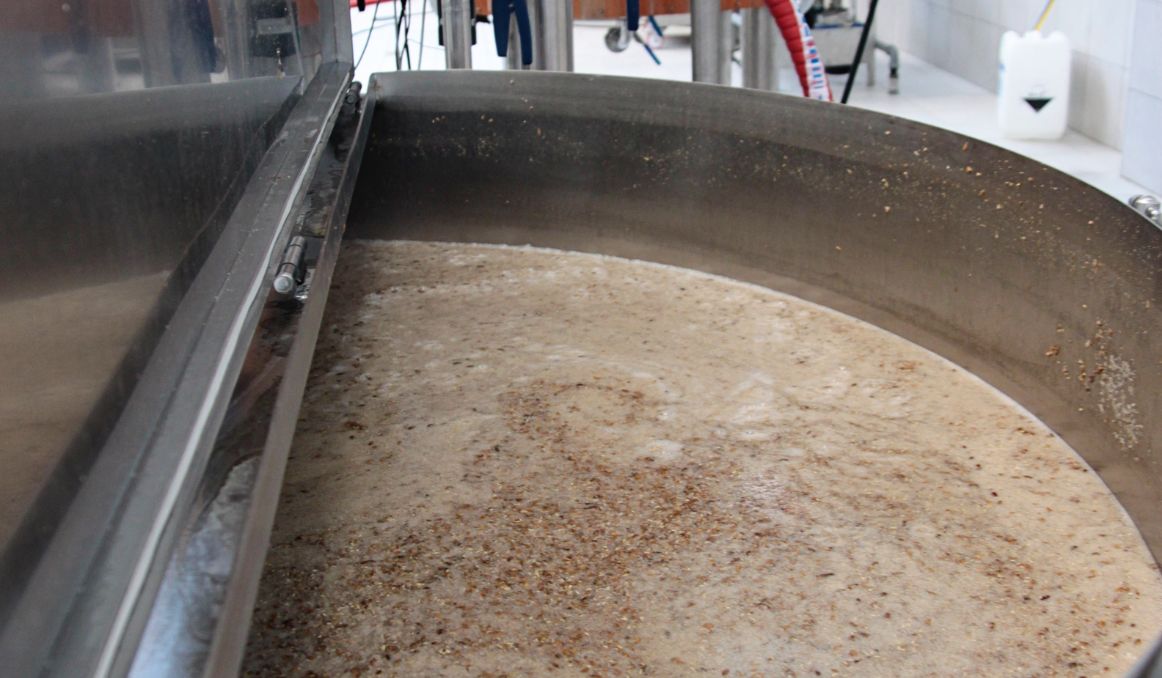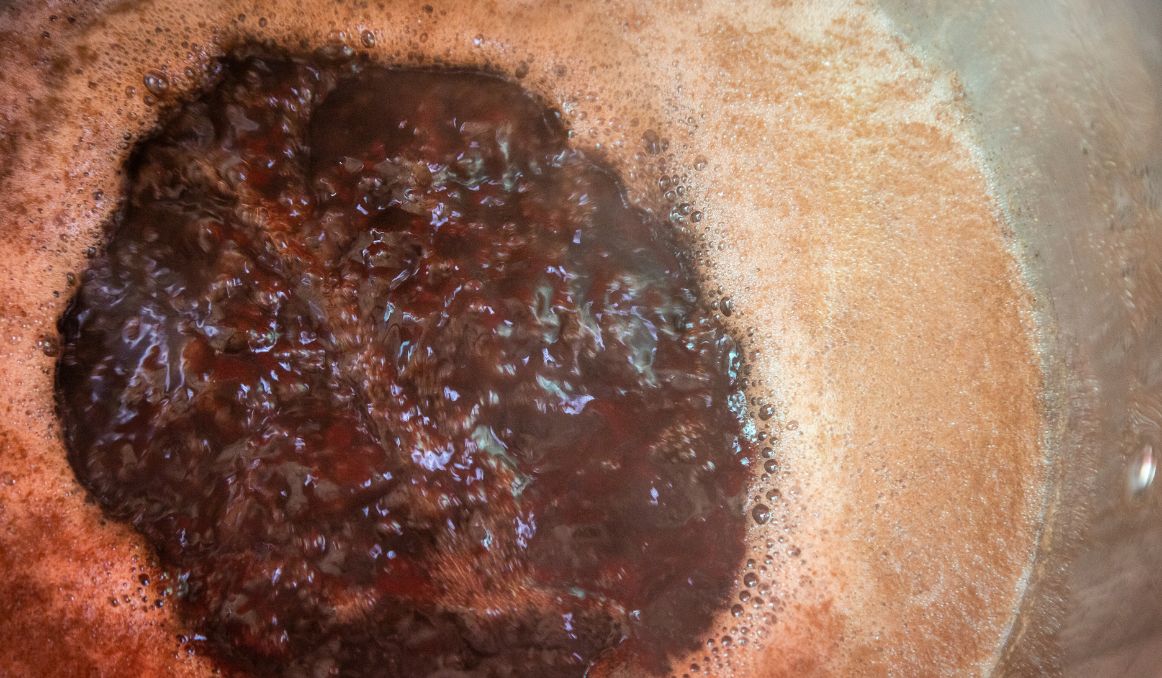What Is Lautering in Beer Production?
What is lautering in beer production? The brewing world often seems like it has its own unique language to describe what is a very simple process. This reality is likely because brewing is such an ancient tradition, truly going back thousands of years to the beginning of the agricultural revolution, right after we humans stopped our nomadic lifestyle and began to grow grain, and then turn grain into magical foods and beverages.
As a result of brewing going through so many iterations of a basic process, we have picked up language from various corners of the world, and continued to utilize them to make brewing sound like its own magic.
Let’s talk basics.

The Basic Beer Process
To make beer, a brewer simply needs to combine malted grain and hot water, add yeast once the water has cooled own, and then add hops.
Simple, right?
Kind of, yes.
The ingredients can really make or break a great beer.
Yeast
Yeast of course is the primary and most essential ingredient in beer, which is funny as it was long the most mysterious.
Yeast is a wild, living organism whose only function in its life is to find and consume sugar for energy so it can survive and reproduce asexually. It creates its own daughter cells, which can then go on to do the same.
As a waste product of this sugar consumption, yeast expels alcohol and carbon dioxide. Lucky for us.
In beer, we need to make the grain nice and sugary so when yeast enters the wort, it gets right to work doing its one job.
Historically, yeast was simply attracted from the wild to the sugary quality of the wort.
Today, most brewers add their own, domesticated yeast.
Grain
The trick to grain in beer is to ensure it is malted.
Malting the grain, or toasting, roasting, or kilning it, converts the starches in the grain to sugars, making them more attractive to the yeast.
While yeast will consume any fermentable carbohydrate – sugar, starch, or fiber – it prefers sugar as it is easiest to consume and convert for yeast, which creates more alcohol and carbon dioxide.
Water
In brewing, we want water that an optimal alkalinity and level of hardness (depending on the type of beer we’re producing).. We also need to be sure we boil the water so that it is hot enough to steep the sugars from the grains into the water for the yeast to consume and create a beverage, but it must cool down enough that the yeast can survive once added.
Hops
Finally, hops are added either during the mash-in or boil, or after fermentation. Either way, the hops will cut down the sweet factor created by the malted grain and add a bittering effect beer drinkers have come to love.
Adding the hops before fermentation will cause a more bitter taste while adding the hops after, called “dry hopping” will have a more hoppy, floral, herby taste that is less bitter. Just like with tea, the longer you steep an herb the more bitter it will taste.
Now, the basic beer process is to malt the grain, grind it, boil or “mash” it in, add the yeast, ferment, and then add hops.
There is one step not mentioned here, and that is the separation of the liquid from the grain once mash in and steeping is complete.
You now have a fully saturated liquid that is called wort. All the grain nutrients and sugars have ideally been extracted, and you need to both filter out the sediment and ensure you are not leaving any rich sugars behind.
This process is called “lautering.”
Lautering

Lautering takes place after the mash-in, and the term comes from the German word ablautern, which roughly means “rinse off.” It takes place when brewers drain the mashed grain from the liquid through a filtered false bottom on the mashing vessel, called a Mash Lauter Tun, or MLT, in which the grain was boiled and steeped.
Remember, the crucial part of this step is to ensure no sugars and nutrients are left behind.
Once lautering is complete, you have wort ready for fermentation.
The entire lautering process involves a few steps.
Mashout
The mashout is the first step in lautering, and it is not always necessary. The mashout is a way of thinning out any mash that might be too thick. This thickness may occur if more than 20% of your grain is wheat or oats, or if you have a higher ratio of water to grain. Mashing out simply means to bring the temperature of your mash to 170 degrees Fahrenheit before draining it so the wort, which will stop all enzymatic processes and thin it out and allow the wort to filter through the grain.
Lautering begins when the bottom of the vessel is dropped out and the wort filters through the grain, picking up sugars and nutrients from the grain as it washes through the wired screen at the base.
Sparging
Once all the wort has cleared, brewers then decide whether to sparge (they usually do). Some few brewers will decide to simply ferment the wort they have and either reuse the mash for another brew or toss it.
Most brewers will either perform a fly-sparge or a batch sparge.
The fly sparge is the traditional German way and involves sprinkling hot water over the remaining mash to ensure the remaining grain is completely rinsed of sugars and nutrients.
The batch sparge is the British way, which simply involves pouring hot water over the grain and creating an entirely new batch of wort, much lighter obviously, that can then be used to make a lighter bodied beer, called small beer, or added back to the original wort.
Once lautering is complete, fermentation can begin.
Cheers!
Passionate about the beer and/or wine making process? So are we! If you’re interested in finding out how you can use our technology to control fermentation and monitor your yeast, save work hours and improve the cost-efficiency of your business, drop us a line at [email protected] or check out our product pages:
- Oculyze BB 2.0 (Better Brewing) Yeast Cell Counter App + Hardware
- Oculyze FW (Fermentation Wine) Yeast Cell Counter App + Hardware
Also, you can now get access to a fully functional demo account to test your yeast via our Web App. Completely free of charge and with no commitment to purchase.
Sources:


